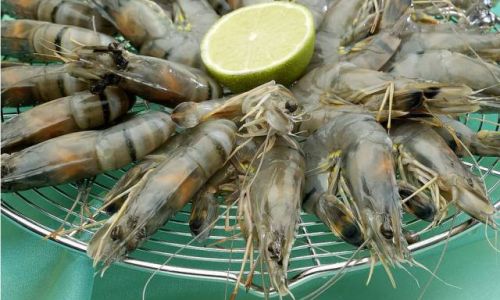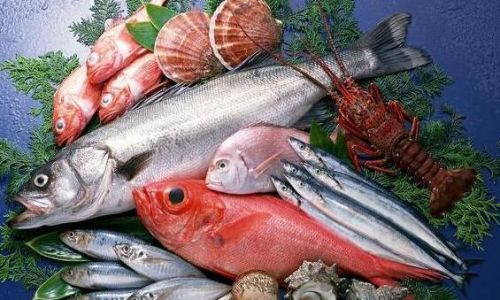Introduction
Seafood lovers across the globe cherish the delicate flavors and nutritional benefits that fresh seafood offers. From the succulent taste of a perfectly grilled salmon steak to the sweet, tender meat of a lobster, the appeal of seafood is undeniable. However, enjoying seafood to its fullest potential requires careful selection to ensure freshness. Consuming stale or improperly handled seafood can lead to food poisoning and other health issues. Therefore, knowing how to identify fresh seafood is crucial for both culinary enjoyment and safety. This comprehensive guide will provide you with the essential tips and techniques to help you distinguish fresh seafood from its less desirable counterparts.
Understanding the Importance of Freshness
Freshness is a critical factor in determining the quality, taste, and safety of seafood. Fresh seafood retains its natural flavors, textures, and nutrients, providing a superior eating experience. Conversely, stale seafood can develop off-flavors, become tough or rubbery, and lose essential nutrients. Moreover, seafood that has been improperly handled or stored can harbor harmful bacteria, viruses, or parasites, posing a significant health risk. Therefore, it is imperative to inspect seafood carefully before purchasing or consuming it.

Visual Inspection
One of the most straightforward methods to assess the freshness of seafood is through visual inspection. Here are some key indicators to look for:
-
Color: Fresh seafood typically has a vibrant, lively color. For example, fresh fish should have scales that are tight and shiny, with bright, clear eyes and red or pink gills. Shellfish like lobsters and crabs should have shells that are firm and moist, with a bright coloration. If the seafood appears dull, discolored, or has slimy patches, it may be stale.
-
Texture: The texture of fresh seafood should be firm and moist. Fish fillets should be tight and spring back when pressed gently. Shellfish should have shells that are difficult to open manually, indicating that they are still alive or recently deceased. Avoid seafood that feels mushy, soft, or has a slimy coating, as these are signs of decomposition.
-
Odor: Fresh seafood has a mild, oceanic scent. If the seafood smells fishy, ammonia-like, or otherwise unpleasant, it is likely not fresh. Remember, a strong odor is a clear indication that the seafood has begun to decompose.
Checking for Signs of Freshness in Specific Types of Seafood
Different types of seafood have unique characteristics that can help you determine their freshness. Here are some guidelines for specific seafood categories:
-
Fish: When buying whole fish, check for clear eyes, bright red or pink gills, firm flesh, and shiny scales. Fillets should be moist, firm, and have a clean cut. Avoid fish with sunken eyes, brown or slimy gills, or a flaky texture.
-
Shellfish: Live shellfish, such as lobsters, crabs, and clams, should be active and responsive to touch. If they are already dead, look for shells that are tightly closed or difficult to open. Dead shellfish should be avoided if they have been out of water for more than a few hours, as they can quickly spoil.

-
Shrimp and Prawns: Fresh shrimp and prawns should have firm, translucent flesh and a slight curve to their bodies. Avoid shrimp that are gray, slimy, or have a strong odor.
-
Squid and Octopus: Fresh squid and octopus should have firm, rubbery flesh and a clean, mild scent. Avoid those that are soft, slimy, or have a strong fishy odor.
Checking Labels and Certifications
When purchasing seafood from a store or market, always check the labels and certifications for information on the product’s origin, handling, and freshness. Look for:
- Date Labels: Some seafood products may come with a “use by” or “best before” date. While these dates are not always indicative of freshness (especially for frozen seafood), they can provide a general guideline.
- Country of Origin: Knowing where the seafood was caught or farmed can give you insight into its freshness and handling practices. Some countries have stricter regulations and quality control measures than others.
- Certifications: Look for certifications such as Marine Stewardship Council (MSC) or Best Aquaculture Practices (BAP), which indicate that the seafood was sourced responsibly and sustainably.
Storage and Handling Tips
Once you’ve purchased fresh seafood, proper storage and handling are essential to maintain its quality and safety. Here are some tips:
- Refrigeration: Store fresh seafood in the coldest part of your refrigerator, ideally on a bed of ice. This helps to maintain its temperature and freshness.
- Freezing: If you’re not planning to eat the seafood immediately, freeze it as soon as possible. Properly frozen seafood can retain its quality for several months.
- Thawing: When thawing frozen seafood, do so in the refrigerator or under cold running water. Never thaw seafood on the counter or in hot water, as this can promote bacterial growth.
Conclusion
Identifying fresh seafood requires a combination of visual inspection,嗅觉判断, and understanding the specific characteristics of different types of seafood. By following the tips and techniques outlined in this guide, you can ensure that you are selecting high-quality, safe seafood that will deliver a delightful culinary experience. Remember, freshness is key to maximizing the taste, texture, and nutritional benefits of seafood. So, the next time you’re at the market or seafood counter, use your knowledge to make informed choices and enjoy the bounty of the sea to its fullest potential.






0 comments